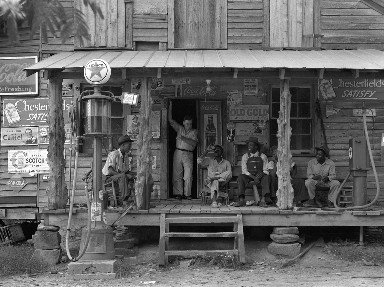Quiz Answer Key and Fun Facts
1. "The greater and more audacious the lie, the greater likelihood of the gullible masses believing it". To whom do we owe this infamous quote?
2. On 22 June 1941 Hitler invaded Russia. That was Operation Barbarossa. How many tanks and other motor vehicles were deployed by the Nazis in that offensive?
3. Who did Stalin appoint as Marshal of the Soviet Union at the time of Operation Barbarossa?
4. What was the name (acronym) of the Soviet Intelligence Service under Stalin?
5. During the Stalin era, many hundreds of thousands of Soviet citizens fell victims of the Great Purge which entailed explusion from the Party, deportation to the gulags or execution. The accused appeared before a tribunal notorious for its swift condemnation, often without evidence or defense, resulting in quick sentences to capital punishment. What was the name given to this type of tribunal?
6. Mao Zedong, aka Chairman Mao, started his despotic career as the leader of the Autumn Harvest Uprising in 1927 in which he led a few peasants against Chiang Kai-shek (Zhang Gai Chek in Pinyin) the leader of the Kuomintang (Guomingtang). What was the result of that uprising?
7. In 1957, 8 years after coming into power and proclaiming the foundation of the People's Republic of China, Mao Zedong launched an ambitious and unrealistic campaign known as the "Great Leap Forward". Its main purpose was to turn the country from an agrarian economy into a communist society through land reforms and rapid industrialization. What was the result?
8. Which American president first visited China in in 1972, in an attempt to make an opening with that country in order to counterbalance Soviet Power, and was welcomed by Mao Zedong in Beijing?
9. Hitler volunteered to serve during WWI. While on the front, during periods of relative calm, he would spend his spare time doing what?
10. During WWI, aside the fact he was decorated for bravery with the Iron Cross 1st and 2nd class, Hitler managed to have a rank. Which one?
11. Joseph (Iossif) Vissarionovitch Djougachvili is better known under the name of "Stalin". Why did he choose that pseudonym?
12. Mao Zedong's dictatorship used two highly effective repressive tools: the "laogai" and the "thamzing". What were they?
13. In 1933, Mao Zedong with his Red Army and Communist Party were still fighting the Kuomingtang (Guomindang in pinyin, Chinese Nationalist Party in English), but, like in 1927, they were once more defeated and forced to retreat to evade pursuits by the Kuomintang. This retreat has a name and how long did it last?
14. Hitler had a romantic life, believe it or not! He had a mistress, Eva Braun, who became his wife. How long did their marriage last?
15. What name is usually given by historians to Germany's political regime just before Hitler established his "Drittes Reich" (Third Reich)?
16. Beria, chief of the NKVD, with full approval from the Soviet Politburo and Stalin himself, gave orders to kill all Polish military officers, police officers, member of the Polish intelligentsia and soldiers who had been captured following the 1939 Soviet invasion of Poland. This massacre which took place in 1940 in a forest is known as...?
17. Who were the Chinese Red Guards?
18. Which territory did Mao invade in 1950 and what were the consequences?
19. The "State Anthem of the USSR" was introduced in 1944, and honored both Lenin and Stalin. Which socialist song, written in 1871 by Eugene Pottier and set to music in 1888 by Pierre de Geyter, and also used as an anthem, did it replace?
20. Which actor NEVER played the role of Hitler?
Source: Author
Snyper3000
This quiz was reviewed by FunTrivia editor
bloomsby before going online.
Any errors found in FunTrivia content are routinely corrected through our feedback system.


